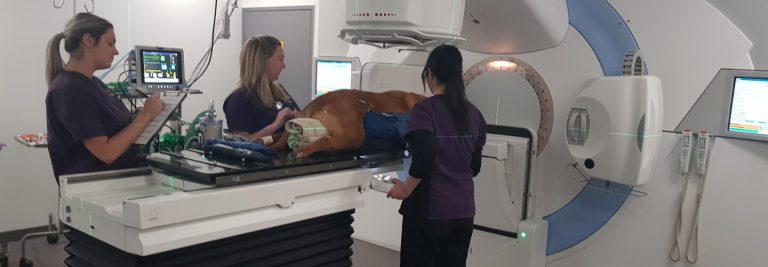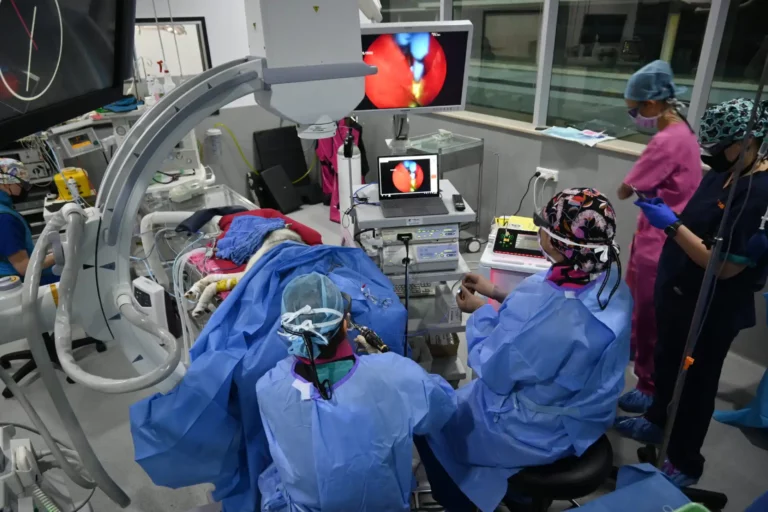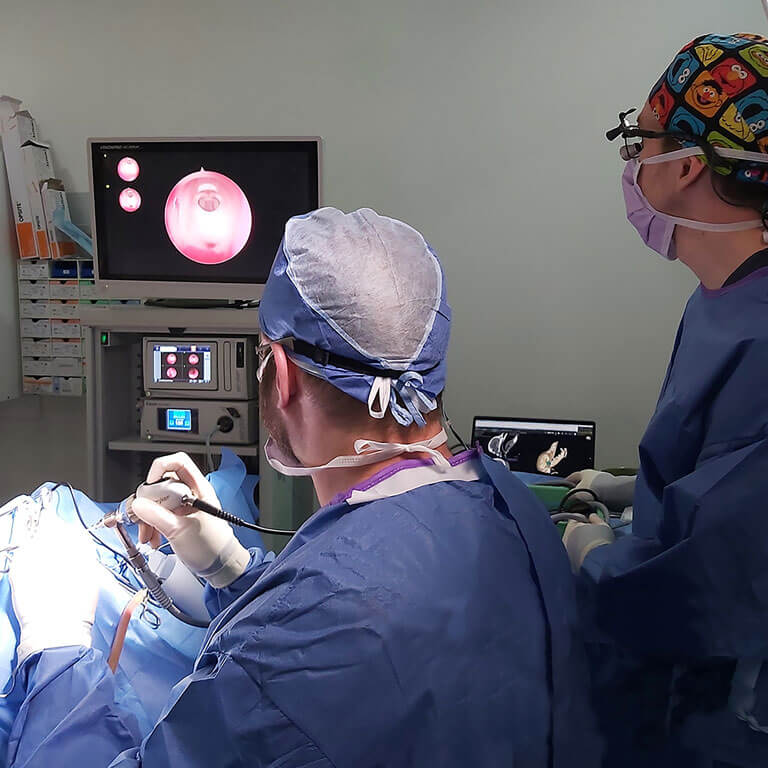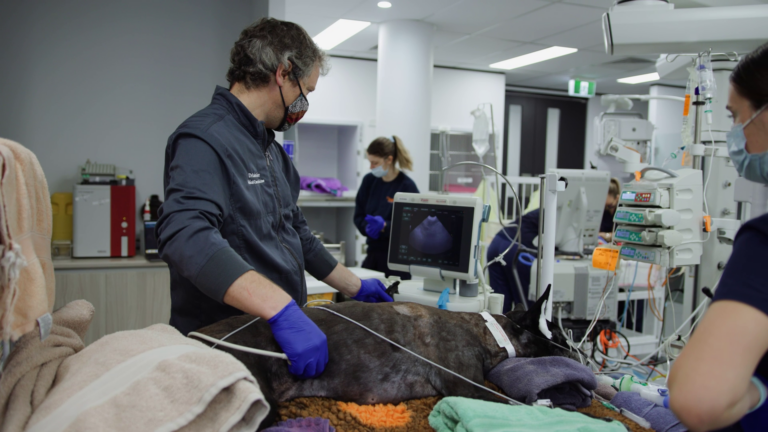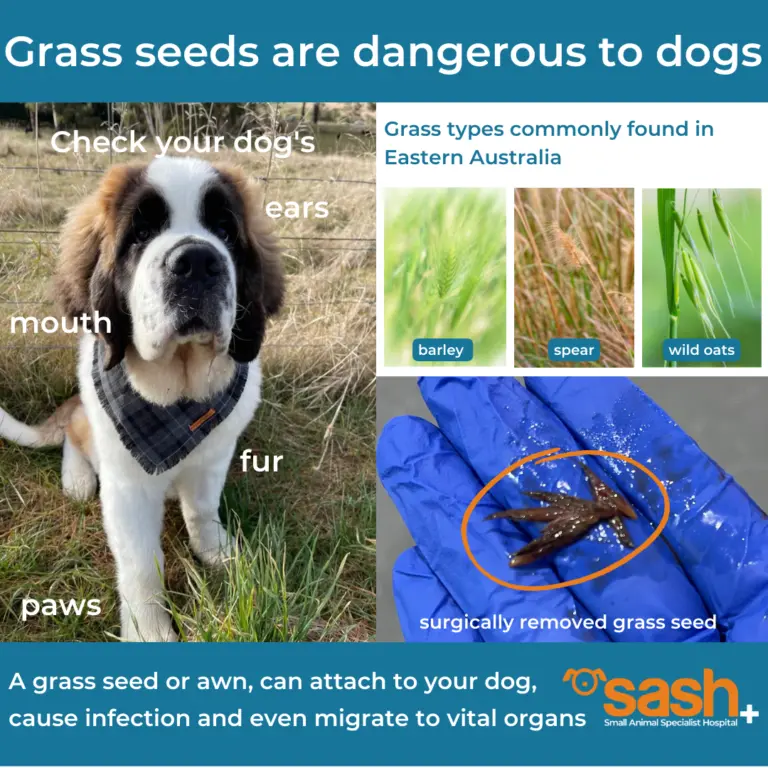Did you know that grass seeds can cause serious infections and problems in your dog? It’s a common condition we see in veterinary practice, and it is hard to believe that something so small can cause so much discomfort and havoc. The common types of grass on the east coast of Australia are spear grass, barley grass, and wild oats.
Types of Seeds
1. A grass seed itself, which is no longer than a centimetre, is sharp and pointy, and can be picked up through your dog’s nose, mouth, fur, paws, ears, or eyes causing inflammation and infection if not removed and treated. The seed essentially attaches to and migrates through the body and depending on its entry point, can travel to the lungs, bladder, brain, and even spinal cord amongst other locations.
2. An awn, or ‘barb’ is a harder shell with seeds that grow. Commonly, due to its sharp shape and large size, it will get stuck in your dog’s fur and travel under the skin. If not detected early an awn will also migrate, cause infections and generally requires diagnostic imaging to locate it and surgical intervention to remove it.
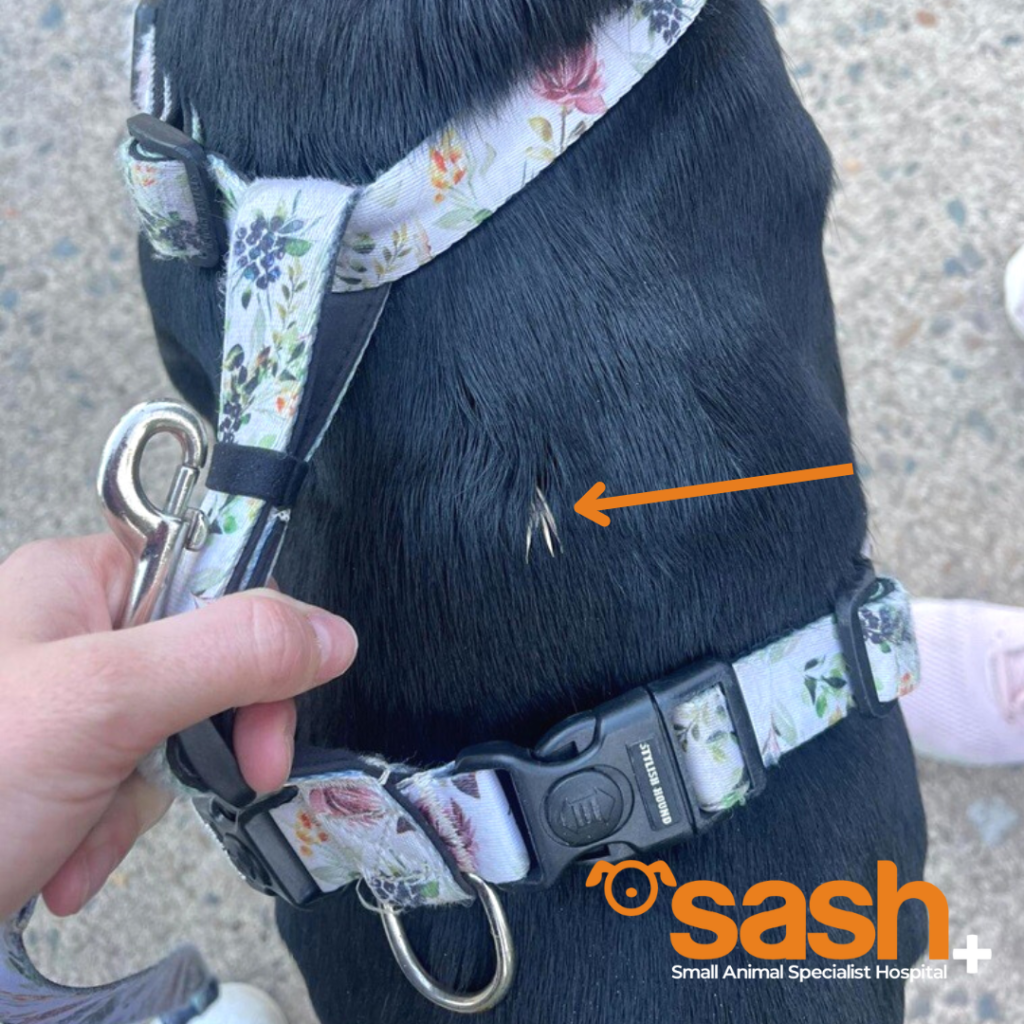
Symptoms of a grass seed or awn foreign body include:
-Pain, swelling, excessive licking, oozing or bloody discharge, lameness (common symptoms when the seed has entered via the skin or paws)
-Itching, head tilt, shaking head, neurological symptoms (if the seed has entered the ears or brain)
-Sneezing, discharge, or blood from the nose, shaking head or pawing at their muzzle (when the seed has entered through the nose)
-Swelling, redness, discharge of the eyes
-Coughing, fever, tiredness, abnormal breathing, swelling of the neck, inappetence (signs the seed may have entered the lungs)
-Difficulty walking, inappetence, difficulty urinating, weakness (signs the seed may have penetrated the spinal cord)
Breeds with medium hair length are most susceptible to grass seed migration due to the density of their coats which the seeds stick to however, any breed can be affected by a grass seed foreign body.
It’s important you brush your long/medium hair dogs frequently to prevent grass seeds from embedding into the skin. Ensure you check your dog all over if they have been running through long grass, especially in the warmer seasons and wetter months. Always keep your lawn cut short and prevent your pooch from running through long grass if possible.
If you are concerned your dog is experiencing symptoms from a grass seed, contact your local veterinarian or SASH Emergency.
